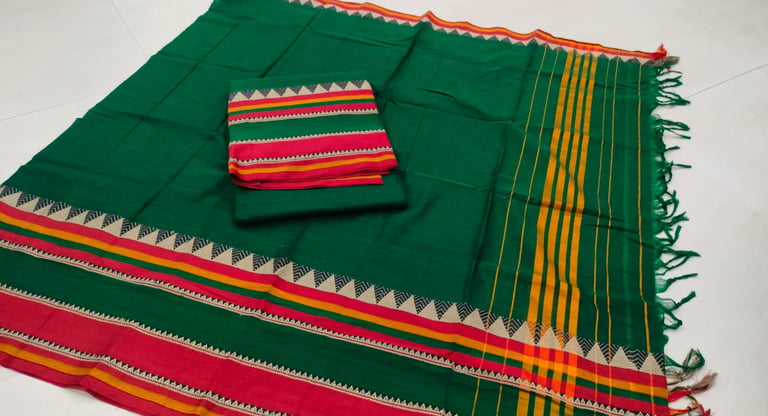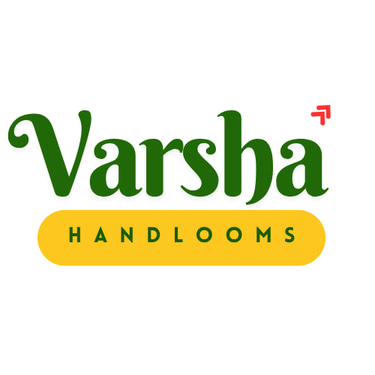VARSHA HANDLOOMS
How to Identify Handloom Sarees


How to Identify Handloom Sarees
1. Look for the Handloom Mark
Government of India’s "Handloom Mark" ensures authenticity.
Usually stitched or printed on the saree or tag.
👀 2. Slight Irregularities in Weave
Handloom sarees often have small imperfections or irregular patterns, as they are woven by hand
🧶 3. Soft Texture and Natural Feel
Handloom sarees are made with natural fibers like cotton or silk.
They feel soft, breathable, and light compared to powerloom sarees.
🔁
4. No Reverse Threads
In handloom sarees, the design is visible on both sides, though the reverse may look slightly dull.
Powerloom sarees often have thread cuttings and a stiff reverse side.
👃
5. Smell the Fabric
Pure silk or cotton handlooms have a natural smell (silk smells like burnt hair when tested with flame).
Synthetic or powerloom fabrics may smell like plastic.
🔍
6. Check the Borders and Pallu
Handloom sarees often have intricately woven borders and pallu (not printed).
Borders are interlocked with the body, not stitched separately.
🧾
7. Ask for GI Tag or Certificate (if possible)
Sarees like Narayanpet, Kanchipuram, Banarasi, etc. have Geographical Indication (GI) tags.
Some reputed sellers provide a certificate of authenticity.
📌
8. Price Difference
Handloom sarees are usually more expensive due to labor and quality.
If a “pure handloom silk saree” is too cheap, it’s likely fake.
📸
9. Zoom into Photos While Buying Online
If buying from sites like VarshaHandlooms.com, zoom in to check:
Uneven threads
Natural fiber texture
Woven, not printed patterns
10. Buy from Reputed Sellers
Purchase from trusted handloom weavers or stores like:
Varsha Handlooms, Narayanpet
Verified websites with transparent return policies
